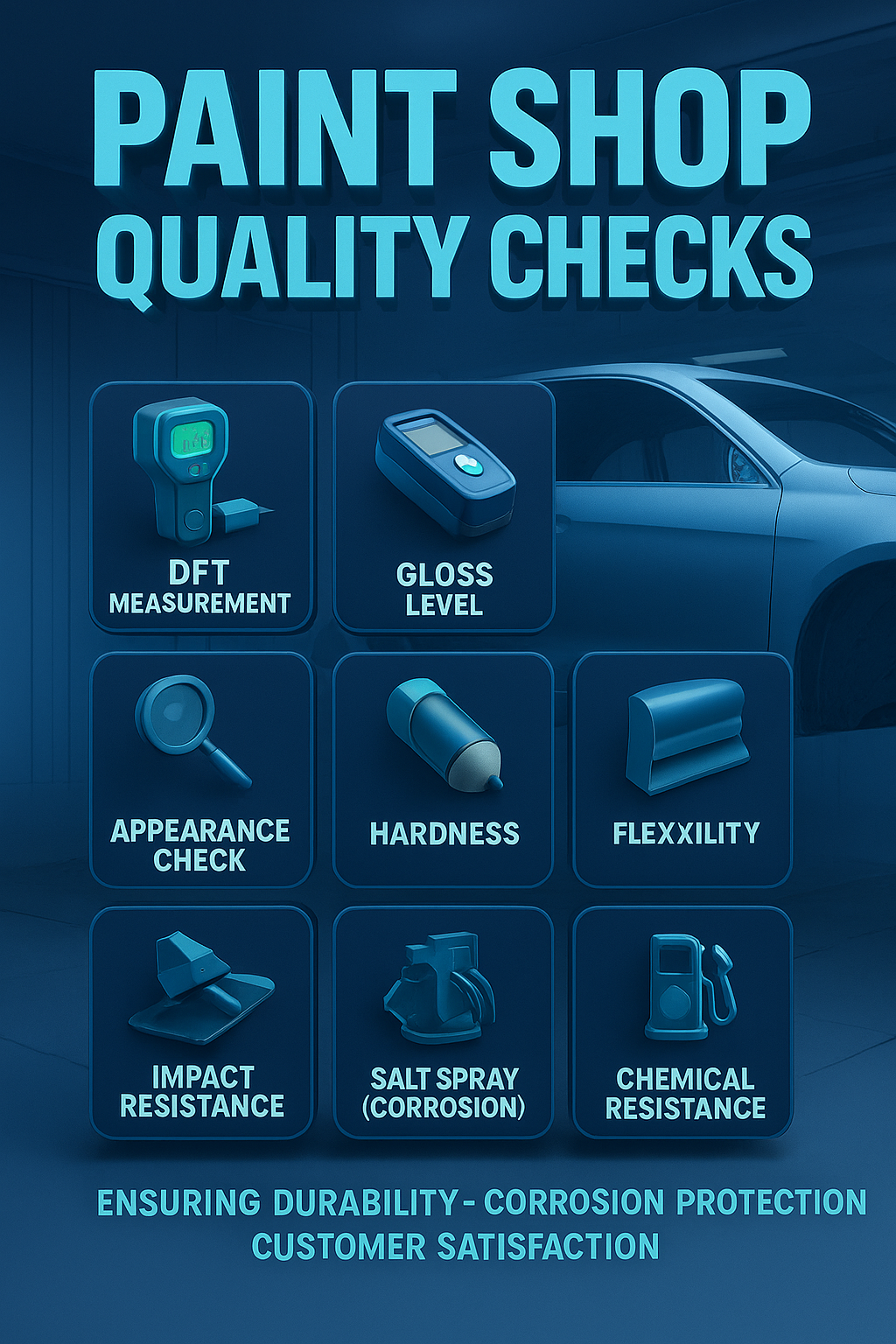🔎 Paint Shop Quality Checks – Complete Guide for Automotive Industry
Maintaining the quality of automotive paint is crucial for durability, corrosion protection, and customer satisfaction. In this guide, we’ll cover the top 10 paint shop quality checks every manufacturer should follow to ensure a flawless finish on vehicles and bus bodies.
1. Dry Film Thickness (DFT) Check
What it is: Measures the combined thickness of primer, basecoat, and clearcoat.
Method: Digital DFT gauge (non-destructive).
Standard Range:
- Primer: 20–30 microns
- Basecoat: 15–25 microns
- Clearcoat: 40–60 microns
- Total: 80–120 microns
Purpose: Ensures proper corrosion resistance and long-lasting durability.
2. Gloss Measurement
What it is: Measures paint shine and reflectivity.
Method: Gloss meter at 60° or 20° angle.
Standard: Automotive finishes usually > 85 Gloss Units (GU) at 60°.
Purpose: Confirms visual appeal and consistent gloss level.
3. Adhesion Test
What it is: Checks bonding strength of paint with the surface.
Methods:
- Crosshatch test (cut grid → tape → peel off).
- Pull-off adhesion test.
Standard: No flaking or peeling allowed.
Purpose: Prevents paint chipping and peeling during service life.
4. Appearance Inspection
What it is: Visual and manual inspection of surface finish.
Checks for:
- Shade uniformity
- Orange peel effect
- Dust nibs, sags, runs
- Pinholes or craters
Purpose: Guarantees a defect-free and uniform appearance.
5. Hardness Test
What it is: Measures resistance against scratches or dents.
Methods: Pencil hardness test / Pendulum hardness test.
Purpose: Confirms paint durability against mechanical wear.
6. Flexibility Test
What it is: Checks whether paint can bend without cracking.
Method: Conical mandrel bend test.
Purpose: Ensures coating withstands vibrations and vehicle body flexing.
7. Impact Resistance Test
What it is: Measures paint’s ability to resist sudden impact.
Method: Falling weight test.
Purpose: Prevents cracking or peeling when exposed to mechanical shock.
8. Corrosion Resistance (Salt Spray Test)
What it is: Accelerated corrosion test in salt fog chamber.
Duration: 240–1000 hours (as per requirement).
Purpose: Ensures long-term anti-rust protection.
9. Chemical Resistance Test
What it is: Exposes painted surface to fuel, oil, coolants, and detergents.
Purpose: Verifies real-world resistance against chemicals and liquids.
10. Environmental Tests (Advanced Quality Checks)
Includes:
- UV resistance
- Humidity chamber
- Temperature cycling
Purpose: Simulates long-term environmental weathering.
✅ Conclusion
By following these paint shop quality checks, automotive manufacturers can achieve:
- Long-term durability
- Superior corrosion resistance
- Enhanced visual appeal
- Higher customer satisfaction
Whether it’s a bus body, passenger car, or commercial vehicle, these QC processes are essential for delivering world-class paint finish and reliability.
